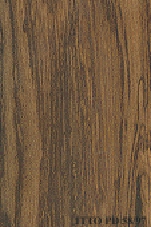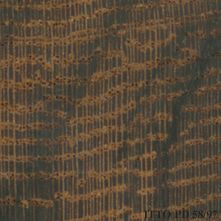
GUAYABI (Patagonula americana)
Trade Name
Guayabi
Scientific Name
Patagonula americana L.
Family
BORAGINACEAE
Common Names
Pau-d`arco; Lanza blanca; Ipe branco; Guayubi; Guayaibimoroti; Guayaibi ra; Guayaibi moroti; Guayaibi; Guayabil; Guayabi negro; Guayabi moroti; Guayabi d`argentine; Guayabi crespo; Guayabi blanco; Guayabi; Guatuvira; Guarapuvira; Guarapovira; Guaraiuva; Guajuvira branca; Guajubira; Guajivira; Guajibira; Guaijibira; Guaiaibira; Guaiabl branco; Guaiabira; Cuayabi; Crespo; Ape branco; Guayabi Amarillo; Guaiuvira (Brazil); Guajuvira; Guayaba
Scientific Name Synonyms
Patagonula glabra Miers; Patagonula australis Salisb.; Cordia patagonula Aiton
Description Of The Tree
Botanical Description
P. americana is often about 10 to 25 m in height, with a trunk diameter of about 70 to 80 cm.
Natural Habitat
Patagonula americana is a pioneer species found in primary and secondary forests. It prefers deep and humid soils, but it is also found in swampy areas.
Natural Distribution
In Brazil this species is reported to grow from the north-east of Rio Grande do Sul until Sao Paulo.
Non Timber Uses
The sapwood of P. americana is locally used for bow making by the Bolivian natives.
Wood Identification
Anatomic Description Of Wood
Vessels in tangential pattern. Tangential diameter of vessel lumina 100 micras or less (very small). Axial parenchyma in continuous tangential lines (included in reticulate and scalariform).
-
 Wood Macro Photo Tangential Plane
Wood Macro Photo Tangential Plane
-
 Wood Micro Photo Of Transversal Section
Wood Micro Photo Of Transversal Section
Availability
Cites Status
Unrestricted
General Wood Description
Odor
Odor and taste are reported to be indistinct.
Color
The sapwood is whitish in color, with a gradual transition into a light brown heartwood, with faint darker streaks.
COLOR INDEX (1=Black, 7=Light yellow,white)
2
Grain
This species is reported to have straight grain.
Natural Durability
It is considered as moderately durable provided it is not in contact with the ground.
Natural durability index (1= Very high durability, 7=Vey low durability)
3
Resistance To Impregnation
It has a high absorption of oil and water based preservatives.
Wood Physical Properties
Basic Density or Specific Gravity (O.D. weight/vol. green) (g/cm³)
0.69
Air-dry Density (Weight and volume at 12%MC) (g/cm³)
0.78
Total shrinkage Tangential (Saturated to 0%MC) (%)
8.2
Total shrinkage Radial (Saturated to 0%MC) (%)
4.3
Drying Defects
Ease of Drying: In air dry condition it dries slowly with little warping. Drying Defects: Checks and splits when big dimensions are used.
Dimensional stability ratio (Total Tangential Shrinkage %/Total Radial Shrinkage %)
1.9
Wood Chemical Properties
Wood Mechanical Properties
Bending Strength (MOR),12%MC (kgf/cm²)
1360
Compression parallel to fiber 12%MC (kgf/cm²)
549
Workability
Sawing
Sawmilling of this species is reportedly easy.
Machining
It is reported to be easy to process, with a good finishing.
Planing
Planing of this species is reported to be easy.
Boring
This species is easy to bore.
Finishing
It is easy to finish.
Steam Bending
It is reported to be possible to bend.
Substitute Species
It is reported to be comparable with European Beech (Fraxinus excelsior) and African Limba (Terminalia superba).
REFERENCED USES
End Uses Summary
FURNITURE AND CABINETS, TOOLS, agricultural tools
Furniture Cabinets
- 21 - Tropical timbers of the world. Part III-Southeast Asian and Oceanian Species.
Tools
- 42 - Utilización Industrial de Nuevas Especies Forestales en el Perú.
Agricultural Tools
- 44 - Atlas of Peruvian Woods
Please Provide Information To View Producer Information